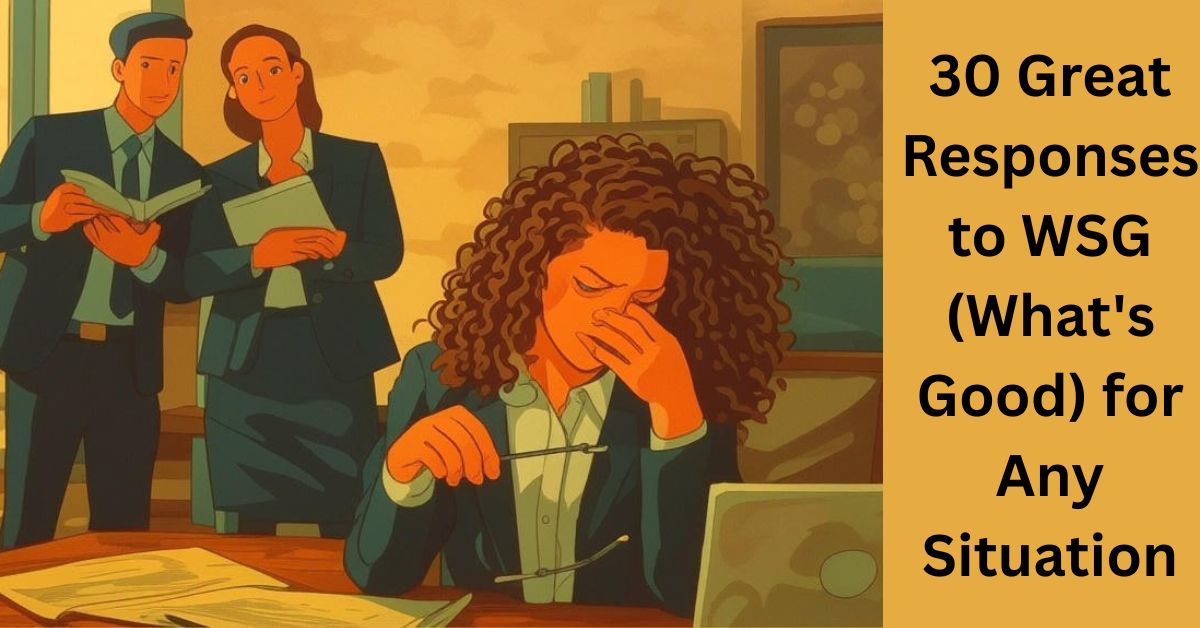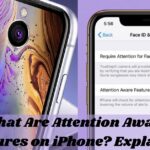In today’s digital age, casual greetings like “WSG” have become commonplace in our online dialogue. Whether you’re navigating dating app conversations or responding to Instagram DMs, knowing how to reply effectively can make all the difference in your social media interaction.
Every time you see those three letters pop up on your screen, you have an opportunity to create a meaningful connection. The right response pattern can transform a simple greeting into an engaging conversation.Let’s explore the world of WSG responses and discover how to master this common digital icebreaker.
What Does WSG Mean?
WSG stands for “What’s Good?” It’s a casual way to ask how someone is doing or what’s happening in their life. The phrase has gained popularity across various messaging platforms.
WSG is more than just a greeting. It’s an invitation to share something about yourself. This open ended question creates space for genuine connection.
You’ll commonly encounter WSG on platforms like:
- Snapchat messages
- Instagram direct messages
- Dating apps like Tinder and Bumble
- Text conversations with friends
- Group chats
The beauty of WSG lies in its versatility. Unlike specific questions, WSG gives you freedom to steer the conversation flow in any direction you choose.
Understanding the message intent behind WSG helps you craft appropriate responses. The sender is usually looking to start a casual conversation, check in with you, or simply say hello.
Mistakes to Avoid When Responding to WSG
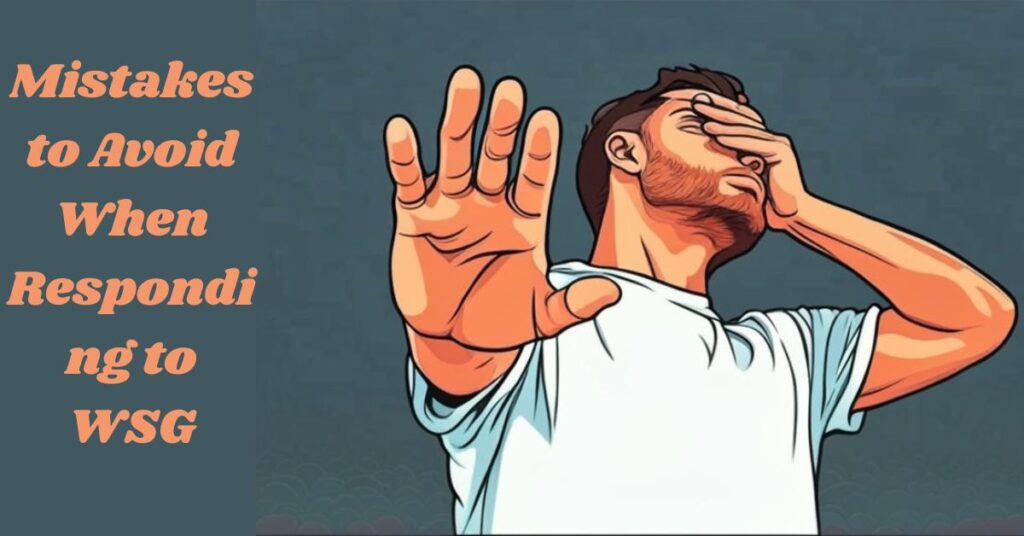
Before diving into perfect responses, let’s examine common pitfalls that can damage your conversation maintenance. Avoiding these mistakes will improve your communication efficiency.
Overreacting
When someone sends WSG, they’re initiating a casual check-in. Excessive enthusiasm in your response can seem disproportionate to the simple greeting.
Avoid replies like “OMGGGG SO MUCH IS HAPPENING!!!” when a simple greeting arrives. Keep your emotional framing appropriate to the context.
Match the energy level of the initial message. If they sent a casual “wsg,” your response should maintain a similar tone.
Overreacting might make the other person uncomfortable. Balance is key in maintaining natural dialogue continuity.
Being Too Formal
WSG is inherently casual, so responding with formal language creates an awkward mismatch in conversational tone. The formality can make you seem distant or uninterested.
Phrases like “I am doing well, thank you for inquiring” feel out of place. They disrupt the causal flow the sender intended.
Remember that digital communication has its own language. Formal responses can make simple exchanges feel like business transactions.
Use relaxed language that matches the informal nature of the greeting. This creates better interaction dynamics.
Making It All About You
A common mistake is launching into a lengthy monologue about yourself without showing interest in the other person. This one-sided approach damages conversational engagement.
Balance sharing about yourself with curiosity about them. After telling them what’s good with you, always follow up with a question.
Every conversational hook should lead back to the other person. This keeps the exchange balanced and engaging.
Remember that good conversations are like tennis matches. Each person should hit the ball back with something the other can respond to.
Using One Word Responses
Single word replies like “nothing” or “good” are conversation killers. They provide no material for the other person to work with and show minimal effort.
One-word answers signal disinterest. They stop conversation flow and put all the burden on the other person to keep things going.
Even adding a simple follow up question transforms your response. “Good, how about you?” takes minimal effort but makes a huge difference.
Your response optimization should aim to keep the conversation moving forward naturally. Short answers rarely accomplish this goal.
Responding with Too Many Messages
Sending multiple consecutive messages can overwhelm the recipient. It disrupts natural conversational patterns and can come across as anxious or intense.
Keep your response contained within one or two messages. This gives the other person space to process and respond.
Multiple messages can make you appear overeager. A well-crafted single response shows confidence and communication skill.
Focus on quality over quantity in your messaging tactics. One thoughtful message beats several scattered thoughts.
How to Respond to WSG? 30 Great Responses for Any Situation
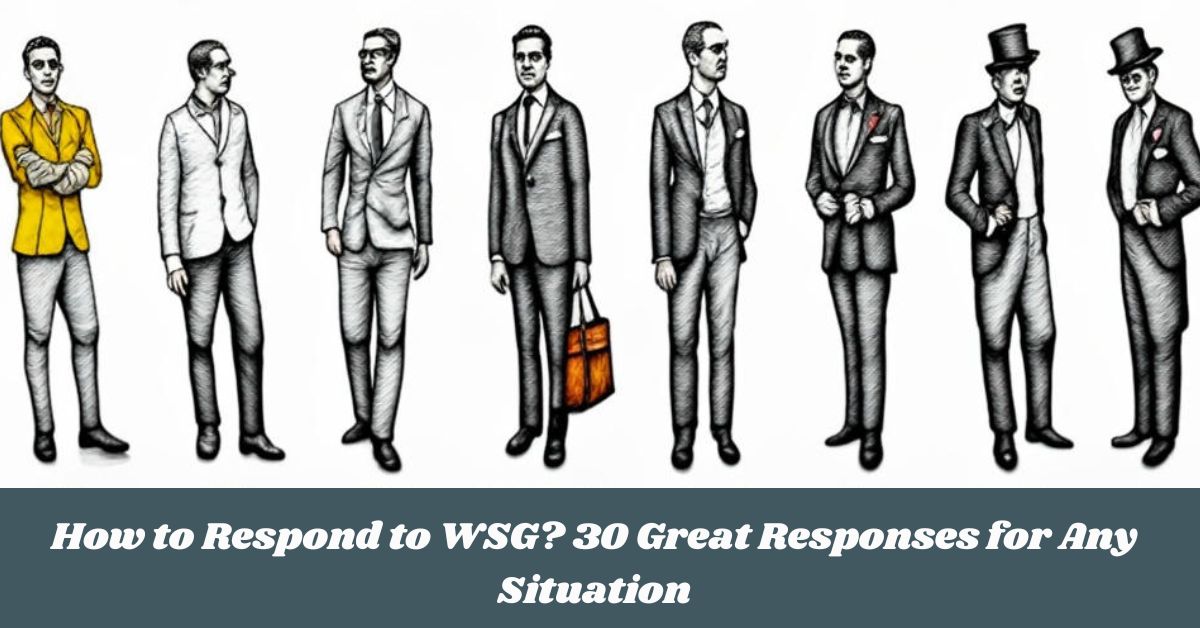
Mastering your reply strategies to WSG can elevate your digital communication. Here are 30 effective responses for various scenarios and relationships.
“Not much”
This classic response keeps things casual and low pressure. It works when you want to acknowledge the message without diving deep.
“Not much” gives the other person space to lead the conversation. It’s perfect for those moments when you’re available to chat but don’t have much to report.
“Just chilling, what about you?”
This balanced response shares your current state while expressing interest in theirs. It’s perfect for casual friendships and new connections.
The “what about you?” part is crucial for conversation maintenance. It passes the conversational ball back to them smoothly.
“Nothing too exciting!”
This adds a touch of humor while keeping things light. It works well when your day has been ordinary but you’re open to conversation.
The slight self-deprecation makes you approachable. It invites the other person to share something more interesting from their day.
“Feeling good! How about you?”
Positivity is always welcome in conversations. This response shares your upbeat mood while showing interest in their well being.
The emotional framing here is optimistic without being over the top. It sets a pleasant tone for the rest of the conversation.
“Busy as always! How’s your day?”
This response acknowledges your hectic schedule while still making time for connection. It works well when you’re actually busy but want to chat briefly.
Mentioning your busy state sets realistic expectations. The follow up question shows you still value the interaction despite your schedule.
“Living the dream!”
A touch of playful sarcasm adds personality to your response. This works best with friends who understand your sense of humor.
This phrase has become a modern classic for a reason. It’s versatile enough to mean you’re doing great or just surviving, depending on your tone.
“Looking forward to the weekend! Got any plans?”
This forward-looking response shifts the conversation to future plans. It works particularly well mid-week when weekend anticipation is building.
Asking about their plans creates an opportunity for potential meetups. It naturally leads to arranging real-life connections.
“Same old, same old. How’s life treating you?”

This acknowledges routine while expressing genuine interest in their life. It works when nothing noteworthy is happening but you want to connect.
The phrase suggests comfortable familiarity. It works well with established friendships where not every conversation needs to be exciting.
READ THIS BLOG: 101 Funny Responses To ‘Happy Birthday’ Wishes
“Not the best day, but I’m managing.”
This honest response shows vulnerability without being negative. It opens the door for supportive conversation without focusing solely on problems.
Sharing struggles creates authentic connection. The resilient tone shows strength even in difficult moments.
“Just working on some stuff”
This vague but friendly response works when you’re occupied but still want to acknowledge them. It gives you privacy while remaining conversational.
The nonspecific nature allows you to control how much detail you share. It’s perfect when you’re busy but don’t want to ignore them completely.
“Everything’s good here, how about you?”
This all purpose response works in virtually any situation. It’s positive, reciprocal, and keeps the conversation flowing smoothly.
Its neutrality makes it appropriate for any relationship. Whether it’s a close friend or new acquaintance, this response fits the bill.
“Just trying to survive the day, you?”
A touch of humorous struggle makes your response relatable. It works when you’re having a challenging day but can still laugh about it.
The lighthearted acknowledgment of difficulty creates connection. Many people will relate to this sentiment on tough days.
“Just enjoying some time off”
This response shares your current state of relaxation. It’s perfect when you’re actually taking a break and in a peaceful mindset.
Mentioning downtime can invite conversation about self care. It opens the door to discussing how both of you recharge.
“Enjoying a lazy day!”
Embracing laziness can be refreshingly honest. This works when you’re having a low-key day and not pretending otherwise.
This response has a cozy, comfortable vibe. It can lead to conversations about favorite ways to relax and unwind.
“Feeling lost but now I’m good.”
This intriguing response suggests a story behind your words. It creates curiosity while ending on a positive note.
The hint of vulnerability followed by reassurance shows emotional depth. It works well with people you trust enough to share feelings with.
“Forget about me, tell me about yourself.”
This response shifts focus entirely to the other person. It works when you genuinely want to hear about them rather than talk about yourself.
The direct invitation to share creates space for them. It shows genuine interest in their life and experiences.
“Just got back from a workout. What’s happening with you?”
Sharing a specific activity gives them something to respond to. This works well when you’ve actually been active and want to share that positivity.
Mentioning exercise can lead to conversations about health and habits. It shares something personal while inviting their input.
“Thinking about you, what’s good with you?”
This warm response works best with close friends or romantic interests. It expresses care and connection in a direct way.
The personal touch shows the relationship is meaningful to you. It creates a moment of genuine connection in digital space.
All’s well, focusing on a new task. What about you?”
This balanced response shares your current focus while showing interest in them. It works well when you’re productive but taking a break to chat.
Mentioning a “new task” might prompt questions about what you’re working on. It creates a natural conversation flow about your current projects.
“Waiting for this week to be over. Getting your text is the best part of my day.”
This response combines honesty about struggles with appreciation for connection. It works well in romantic contexts or close friendships.
The compliment feels genuine when paired with vulnerability. It shows their message genuinely brightens your challenging day.
“Just daydreaming about vacation. Need any travel tips?”
This response shares your current mindset while inviting them into your thoughts. It works when you’re actually planning or dreaming about travel.
Travel is a universally engaging topic. This opens the door to sharing favorite destinations and future plans.
“Found this amazing new coffee shop! We should check it out sometime.”
Sharing a discovery with an invitation creates natural conversation flow. This works when you actually have someplace new to recommend.
The subtle invitation tests their interest in meeting up. It transitions smoothly from online chat to potential real world connection.
“Just finished that show we talked about. No spoilers, but wow!”
This response builds on your shared history. It works best when you have established interests in common.
Referencing previous conversations shows you remember what matters to them. It creates continuity in your developing relationship.
“Heading out soon, but wanted to say hey! How’s your week?”
This transparent response acknowledges your limited availability while still connecting. It works when you genuinely need to be brief.
Setting clear expectations prevents misunderstandings. They won’t feel ignored when you don’t respond immediately after this message.
“Having one of those days where nothing goes right. Could you use some good news?”
This vulnerable response invites support without demanding it. It works when you’re struggling and open to connection.
The question at the end creates an easy way for them to respond. They can share something positive to lift your spirits.
“Just saw something that reminded me of you. What’s up?”
This intriguing opening creates immediate connection. It works when something genuinely makes you think of them.
The personal touch shows you associate them with your daily life. It makes them feel special and remembered.
“Working on my side project! Remember that idea I mentioned?”
This response builds on previous conversations while sharing what you’re doing. It works when you’ve already established some shared knowledge.
Continuing past discussions creates relationship depth. It shows your conversations matter enough to remember and reference.
“Just made the best sandwich ever. Culinary achievements aside, how are you?”
This lighthearted, specific response adds personality and humor. It works when you want to share something mundane in an entertaining way.
The specific detail makes your message memorable. It shows everyday personality rather than generic responses.
“Taking a mental health day. What’s something good in your world?”
This honest response normalizes self care while seeking positivity. It works when you’re actually taking time for yourself.
The vulnerability of mentioning mental health creates authentic connection. The positive question balances the potentially heavy topic.
“Standing in line for coffee, thinking I should’ve texted you sooner. What’s up?”
This response creates immediacy and shows thoughtfulness. It works when you want to express that they’ve been on your mind.
Sharing a mundane moment from your day creates reality. It bridges the digital divide by bringing them into your physical world.
Steps to Craft A Personalized Response for WSG
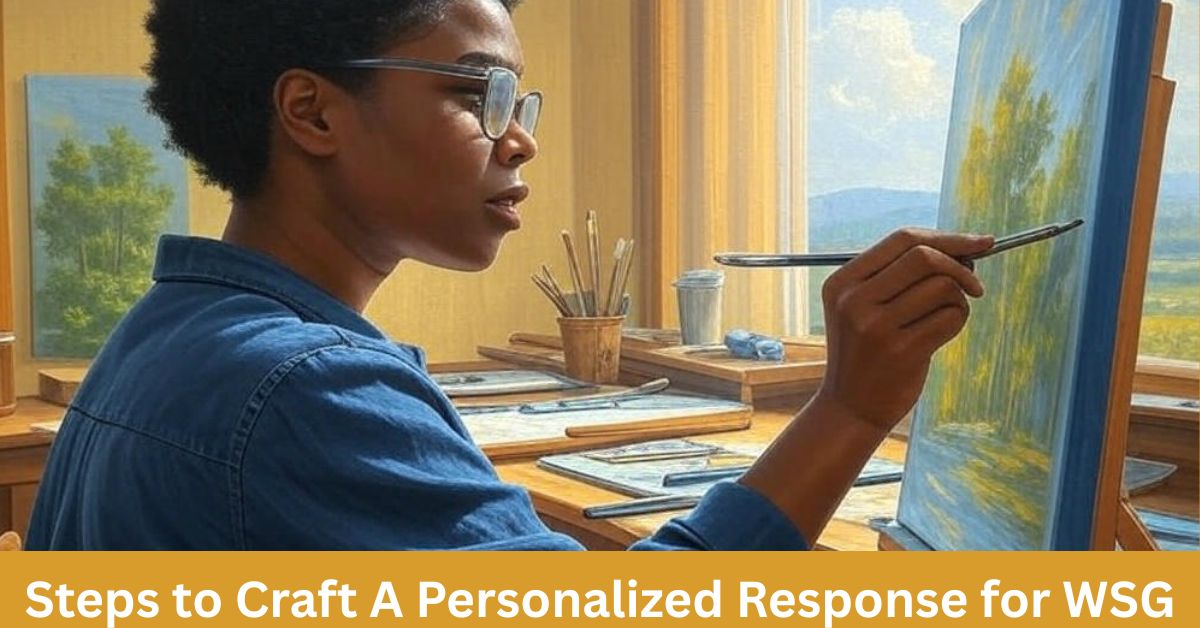
While the examples above provide excellent templates, creating your own personalized responses will strengthen your unique communication style. Follow these steps to craft replies that feel authentically you.
Consider Your Relationship
Your response customization should reflect your relationship with the sender. Close friends deserve different responses than new acquaintances or professional contacts.
- With close friends, you can be more personal and reference inside jokes or shared experiences
- For new connections, maintain friendly warmth without assuming too much familiarity
- In professional contexts, keep it positive but appropriate to workplace boundaries
The depth of your relationship determines appropriate emotional framing. What works for your best friend might not work for someone you just met.
Match the Tone
Pay attention to the conversational tone of their message. A “WSG” with multiple exclamation points suggests different energy than a simple lowercase “wsg.”
- Match excitement with excitement when appropriate
- If they’re brief and casual, respond similarly
- Follow the lead of any emojis or punctuation they use
Mirroring their energy creates conversational flow. It shows you’re attentive to the subtle cues in their communication.
Reflect on Your Day
Authentic message personalization comes from sharing something real about your current situation. Take a moment to consider what’s actually happening in your life.
- Share something specific rather than generic whenever possible
- Mention what you’re doing, thinking about, or looking forward to
- Be honest about your mood while maintaining appropriate boundaries
Specific details create conversation hooks. They give the other person something concrete to respond to rather than vague generalizations.
Be Open-Ended
Design your response to encourage further conversation. Open-ended questions invite the other person to share more than just basic information.
- Ask questions that require more than yes/no answers
- Show curiosity about specific aspects of their life
- Create natural bridges to topics you might want to discuss
Good conversational triggers keep the exchange flowing naturally. They prevent the dreaded conversation dead-end.
Use Humor
When appropriate, adding humor to your response creates connection and showcases your personality. Well placed wit enhances conversational engagement.
- Use light sarcasm when you know it will be well received
- Reference shared jokes from previous conversations
- Keep humor positive rather than self deprecating or negative
Humor creates memorable interaction dynamics. It helps your message stand out among generic responses.
Be Yourself
Authenticity matters more than perfection. Your unique voice should shine through in your responses, creating consistency in your communication style.
- Use vocabulary that feels natural to you
- Don’t force slang or expressions that aren’t part of your normal speech
- Let your personality guide your tone and content
Being yourself creates sustainable dialogue continuity. You won’t have to remember a persona you’ve created, you can just be you.
READ THIS BLOG: 50 Best Replies to The ‘Good Morning’ Texts
Frequently Asked Questions
What if I don’t want to have a conversation when someone sends WSG?
If you’re not available to chat, it’s best to be honest but kind. A simple “Hey! Busy right now but will text later” acknowledges them while setting boundaries.
Should my response to WSG always include a question?
Including a question is recommended if you want the conversation to continue. If you’re just acknowledging their message without continuing the chat, a question isn’t necessary.
Is it okay to ignore WSG if I’m not interested in talking to that person?
While ghosting isn’t ideal, you’re not obligated to respond to every message. If it’s someone you typically talk to, a brief response is courteous.
How long should I wait before responding to WSG?
Respond when you genuinely have time to engage. There’s no perfect timing, but extremely delayed responses to simple greetings can seem disinterested.
Can I use the same response to WSG with everyone?
While having a go-to response is convenient, personalizing based on your relationship with each person creates more meaningful connections.
Conclusion
Mastering your response to “WSG” is more than just learning a few clever replies. It’s about understanding the social signals behind this casual greeting and crafting responses that reflect your authentic self while maintaining engaging conversation flow.Remember that every message is an opportunity for connection. Your response to WSG sets the tone for the entire conversation that follows.
By avoiding common mistakes and implementing the strategies we’ve discussed, you’ll transform this simple greeting into a gateway for meaningful interaction. Whether you’re navigating dating app conversations or catching up with friends, these techniques will enhance your digital communication skills.
The next time you see those three letters appear on your screen, you’ll be prepared with the perfect response for any situation. Your WSG responses will create opportunities for connection rather than awkward dead ends.What’s good? With these tips, your conversations will be better than ever.

Jerry is a seasoned SEO expert with a passion for content writing, keyword research, and web development. He combines technical expertise with creative strategies to deliver exceptional digital solutions.
